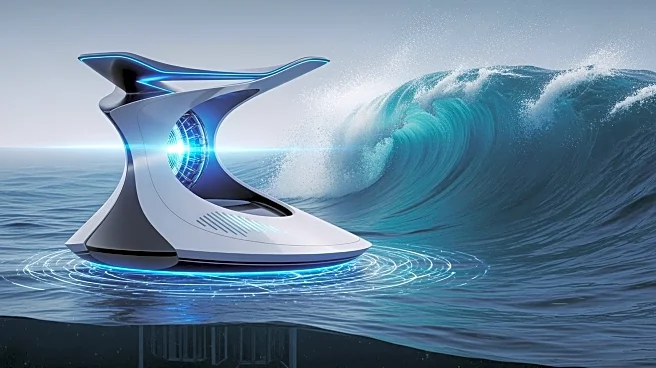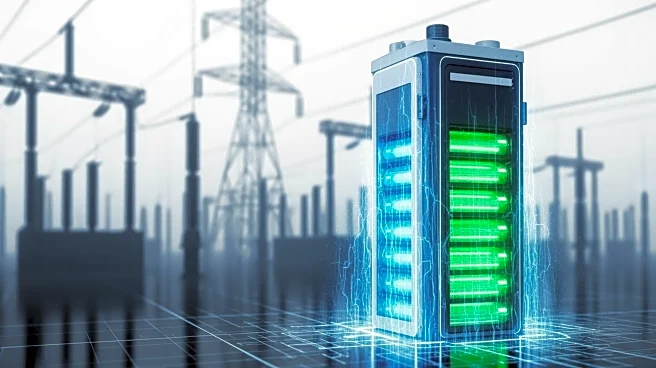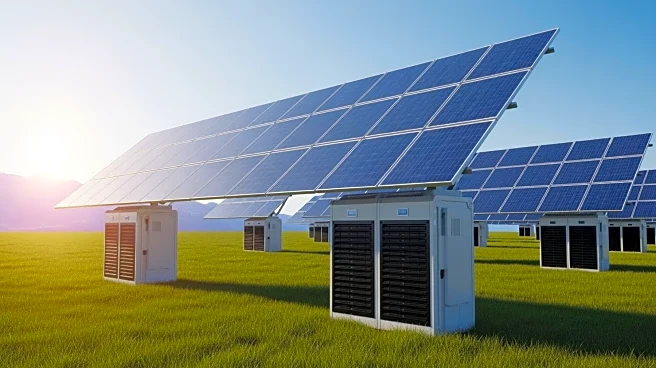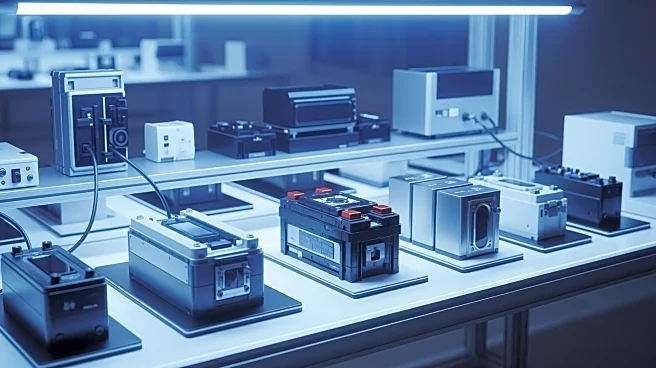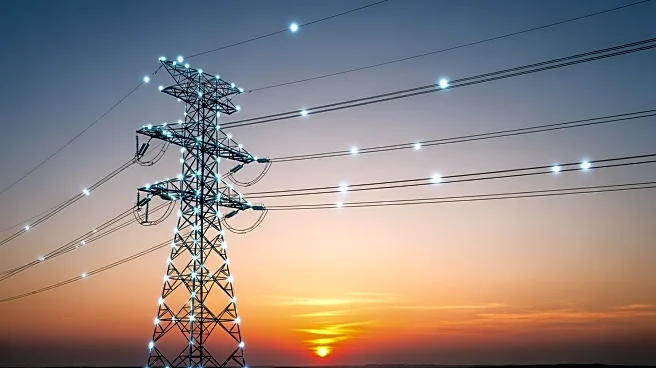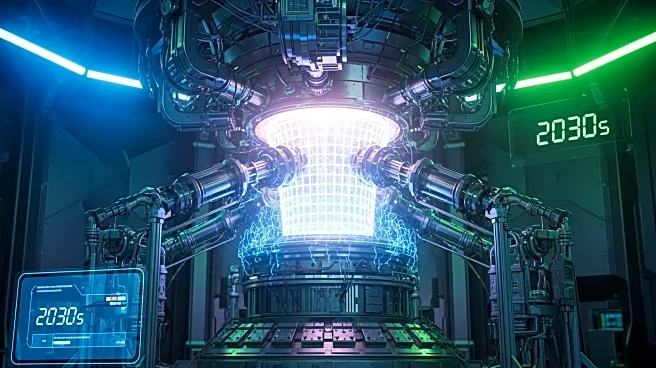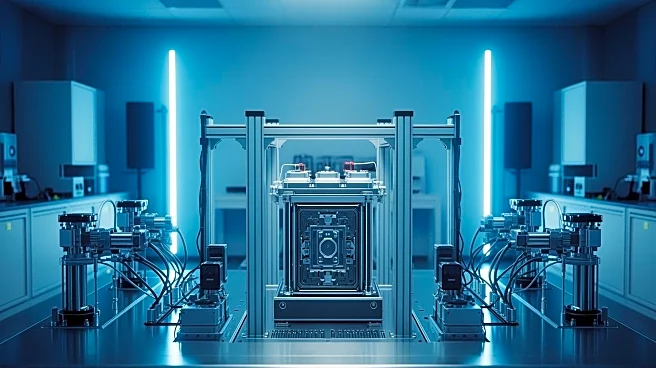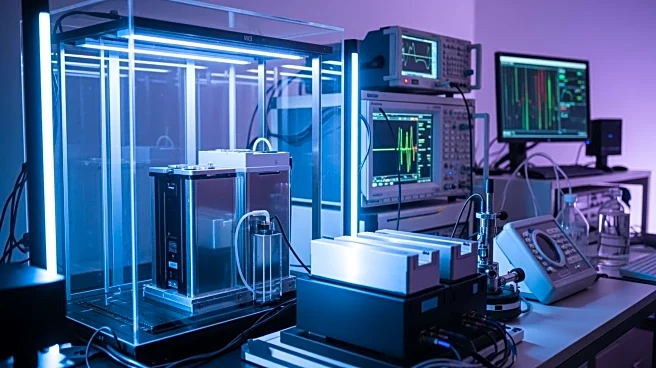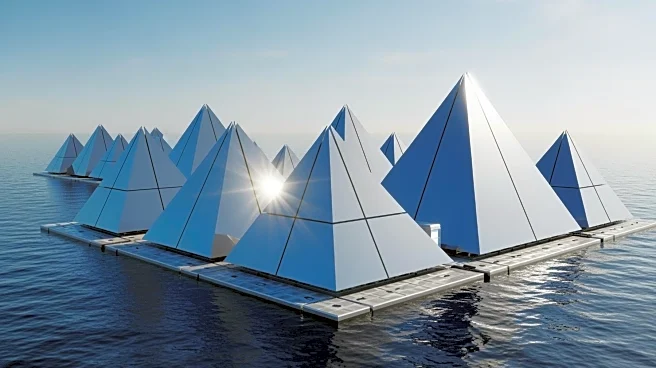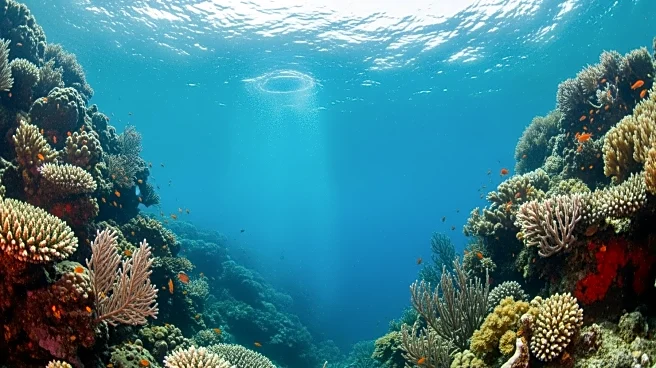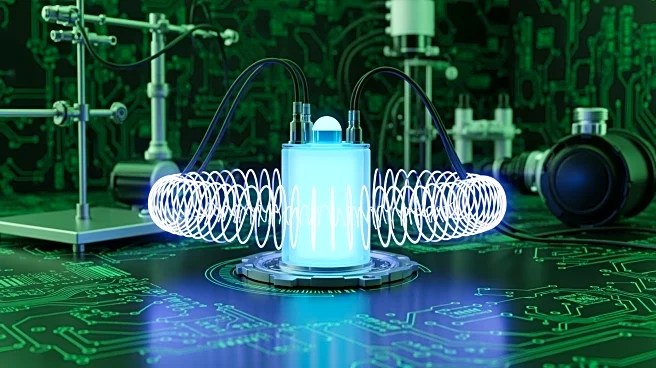What's Happening?
The National Renewable Energy Laboratory (NREL) is advancing its hydraulic and electric reverse osmosis wave energy converter (HERO WEC) through rigorous testing in a wave tank. Since 2024, the team has
been enhancing the device's robustness and reliability by modifying its components. Recent upgrades include replacing the original wire rope with a polyurethane flat belt, which showed superior performance in lab tests. The HERO WEC, funded by the U.S. Department of Energy’s Water Power Technologies Office, is designed to pump seawater through an onshore reverse osmosis system to produce fresh drinking water. The team is now focusing on improving the device's outer body and structure to withstand harsh ocean conditions. The new design features a rigid, shell-like frame and relocates power system components to the top of the float for better maintenance access. These changes aim to enhance the device's durability and operational efficiency.
Why It's Important?
The development of the HERO WEC is significant for advancing renewable energy technologies, particularly in wave energy. By improving the device's durability and efficiency, NREL is contributing to the potential for wave energy to become a viable source of clean energy. This could have substantial implications for energy policy and environmental sustainability, as wave energy offers a renewable alternative to fossil fuels. The advancements in the HERO WEC could lead to increased investment and interest in wave energy technologies, potentially benefiting industries involved in renewable energy production and desalination. The project also highlights the importance of simulation tools in engineering, as they allow researchers to optimize designs before full-scale deployment.
What's Next?
Following the successful validation of the HERO WEC's new design in the wave tank, the research team plans to rely on simulation tools to further refine the device's shape and component configuration. These tools will help determine the optimal design for maximizing power generation and water production while minimizing stress on the device. The next steps involve scaling up the prototype and preparing for longer-term deployments in real-world ocean conditions. The outcomes of these efforts could influence future wave energy projects and contribute to the broader adoption of renewable energy solutions.
Beyond the Headlines
The HERO WEC project underscores the intersection of engineering and environmental science, demonstrating how innovative design and testing can lead to more sustainable energy solutions. The use of computer simulations and wave tank testing exemplifies a methodical approach to engineering that could be applied to other renewable energy technologies. Additionally, the project highlights the potential for wave energy to address global water scarcity issues through desalination, offering a dual benefit of clean energy and fresh water production.
